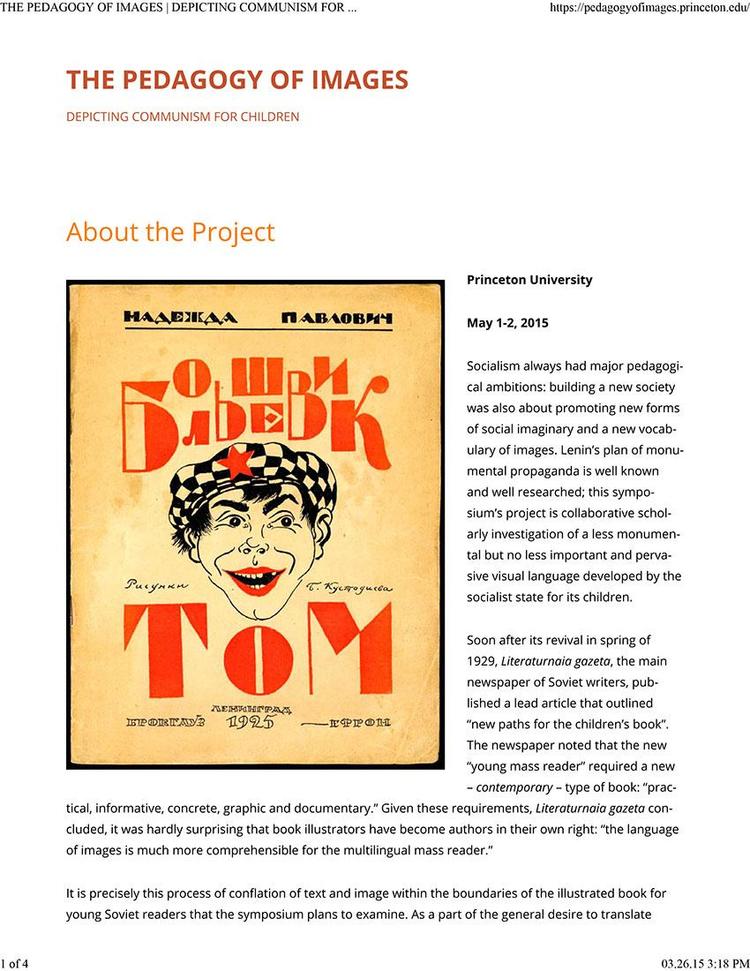Image

The Pedagogy of Images: Depicting Communism for Children
Publication Year
2015
Abstract
Soon after its revival in spring of 1929, Literaturnaia gazeta, the main newspaper of Soviet writers, published a lead article that outlined “new paths for the children’s book”. The newspaper noted that the new “young mass reader” required a new – contemporary – type of book: “practical, informative, concrete, graphic and documentary.” Given these requirements, Literaturnaia gazeta concluded, it was hardly surprising that book illustrators have become authors in their own right: “the language of images is much more comprehensible for the multilingual mass reader.”
It is precisely this process of conflation of text and image within the boundaries of the illustrated book for young Soviet readers that the symposium plans to examine. As a part of the general desire to translate Communism into idioms and images accessible to the illiterate, alternatively literate, and pre-literate, children’s books visualized ideological norms and goals in a way that guaranteed easy legibility and direct appeal, without sacrificing the political identity of the message. Relying on a process of dual-media rendering, illustrated books presented the propagandistic content as a simple narrative or verse, while also casting it in images. A vehicle of ideology, an object of affection, and a product of labor, the illustrated book for the young Soviet reader became an important cultural phenomenon, despite its perceived simplicity and often minimalist techniques. Major Soviet artists and writers contributed to this genre, creating a unique assemblage of sophisticated visual formats for the propaedeutics of state socialism.
It is precisely this process of conflation of text and image within the boundaries of the illustrated book for young Soviet readers that the symposium plans to examine. As a part of the general desire to translate Communism into idioms and images accessible to the illiterate, alternatively literate, and pre-literate, children’s books visualized ideological norms and goals in a way that guaranteed easy legibility and direct appeal, without sacrificing the political identity of the message. Relying on a process of dual-media rendering, illustrated books presented the propagandistic content as a simple narrative or verse, while also casting it in images. A vehicle of ideology, an object of affection, and a product of labor, the illustrated book for the young Soviet reader became an important cultural phenomenon, despite its perceived simplicity and often minimalist techniques. Major Soviet artists and writers contributed to this genre, creating a unique assemblage of sophisticated visual formats for the propaedeutics of state socialism.

